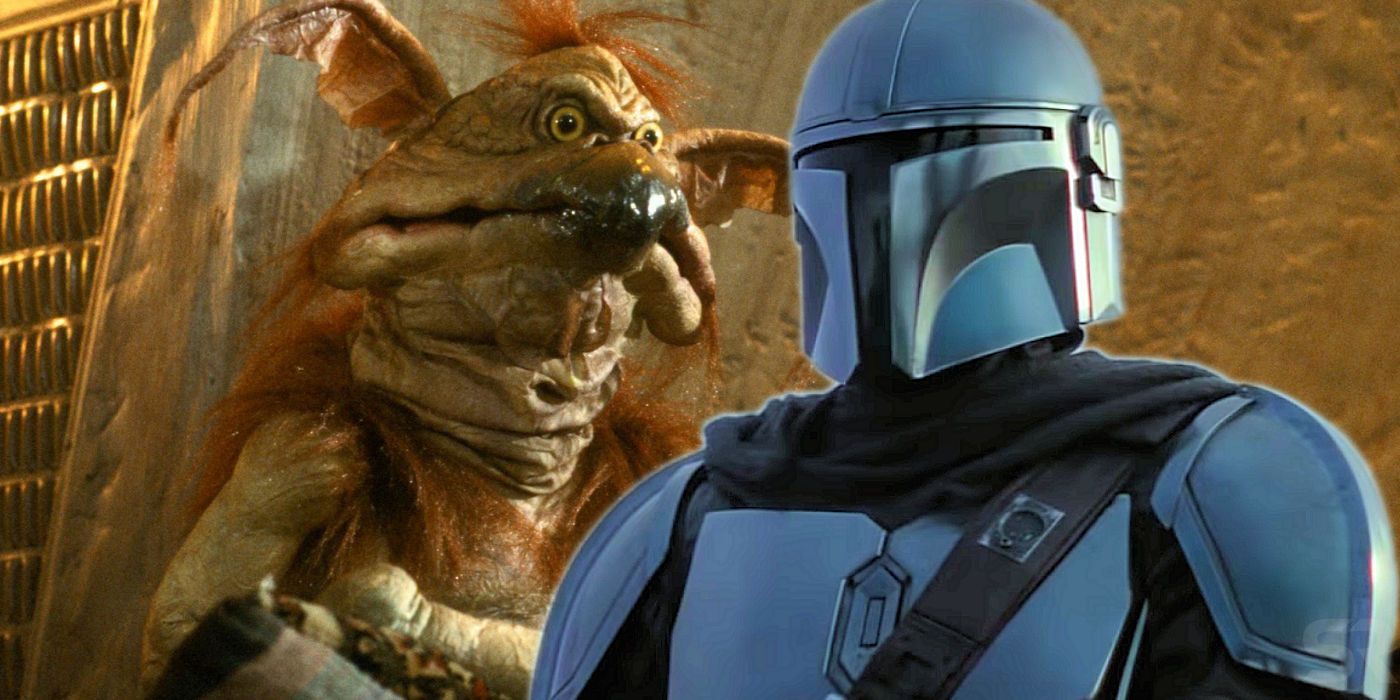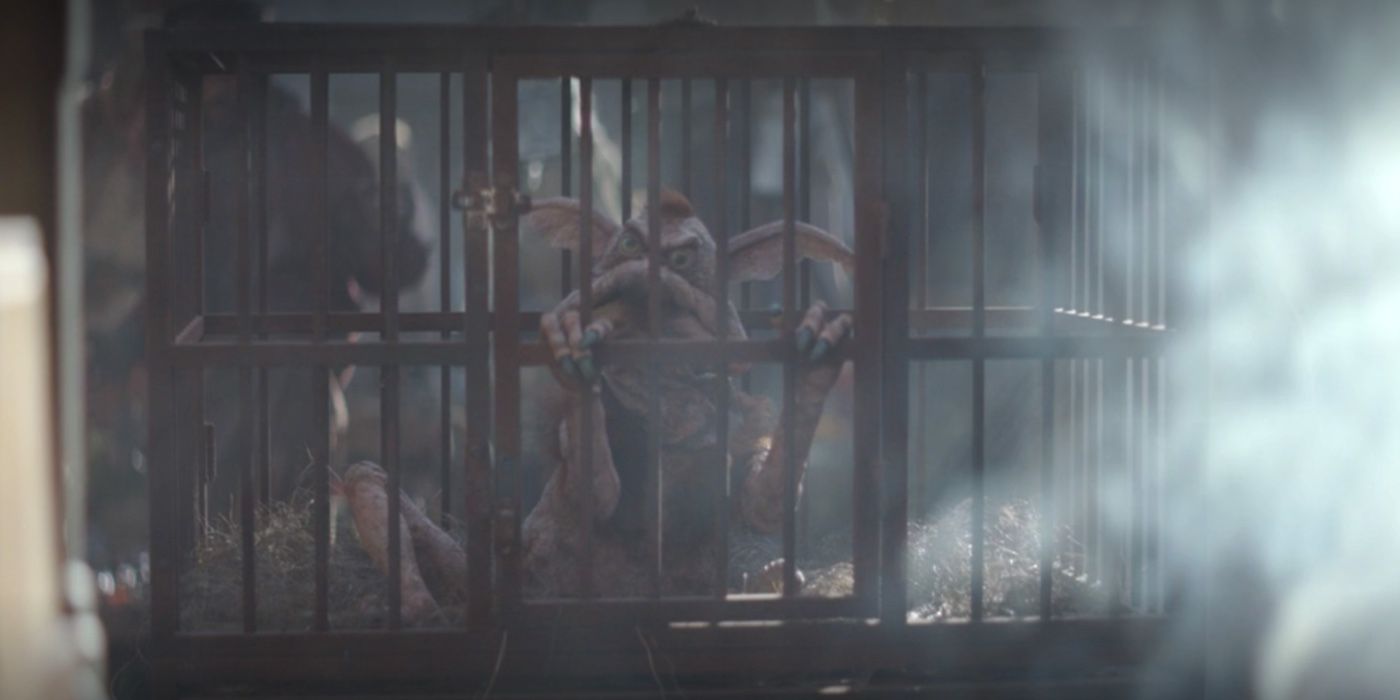In The Mandalorian season 1, episode 1, “Chapter 1: The Mandalorian”, Din Djarin (Pedro Pascal) walks through the marketplace on the planet of Nevarro and passes a Kowakian monkey-lizard, a member of Salacious Crumb’s species, roasting on a spit while another one watches from a cage - and here's how that scene came to be. While it is confirmed in Disney Gallery: The Mandalorian episode 5, "Practical", that the alien roasting or watching is most likely not Salacious Crumb himself, The Mandalorian creator Jon Favreau and director Dave Filoni go into more detail about the meaning behind this brief, but dark scene within the new documentary series.
The Mandalorian takes place between Return of the Jedi and Star Wars: The Force Awakens, after Darth Sidious’ (Ian McDiarmid) Galactic Empire has fallen and before the First Order has risen to power. Known for his malicious and hysterical laugh, Salacious Crumb (Mark Dodson) is first introduced within Return of the Jedi as Jabba the Hutt’s court jester during his prime as a crime boss and ally of the Empire. Similar to Crumb, many Kowakian monkey-lizards served as pets to members of the underworld. While it is assumed that Crumb died when Jabba’s sail barge Khetanna crashed at the beginning of Return of the Jedi during Leia Organa (Carrie Fisher), Han Solo (Harrison Ford), and Luke Skywalker’s (Mark Hamill) escape, the Easter egg featuring Crumb, or a member of his species, within The Mandalorian has dark implications for allies of the Empire after its collapse.
In Disney Gallery: The Mandalorian, Filoni explains the original thought process regarding Salacious Crumb’s cameo, stating how it would’ve been humorous to have a live Kowakian laughing at the one being roasted. “Originally he was laughing at the one being cooked and people thought that was too mean. Because eating them wasn't too mean,” said Filoni during the round table discussion. “So then they made him have sad sounds, like 'aahhh!' And I'm like, 'Is that better… he’s depressed that his friend is being eaten?’” While it would have been in keeping with the species’ dark sense of humor and vicious personality to have the Kowakian laughing at his friend, since Crumb clearly enjoyed Jabba’s cruelty and laughed when Jabba fed his enemies to his pet rancor Pateesa, having the Kowakian watch his friend being cooked and realizing he may be next created a more dynamic message about the cycle of power after the fall of the Empire.
When Crumb is first seen in Return of the Jedi, he thrives as one of Jabba’s minions under a mutually beneficial system: if he can make Jabba the Hutt laugh on a daily basis, he can eat for free. When considering that Crumb himself and his entire species were bottom-feeders capitalizing off of the criminal enterprises of the Empire, Crumb’s short cameo is then symbolic for the fall of the Empire. Favreau addresses this concept in Disney Gallery when he states, “Well, that's what happens after the Empire's gone and after Jabba's gone, that guy's not gonna have a good - I mean, it's probably not the same guy. But it does speak to the way the whole hierarchy gets upended in times of chaos.” Possibly the most dynamic aspect of Salacious Crumb’s cameo then is the fact that The Mandalorian takes two things Crumb formerly enjoyed, watching someone else in pain and eating, and taunts him with it to emphasize the drastic shift of power.
Not only does the Easter egg emphasize the rise and fall of the Empire between Return of the Jedi and The Mandalorian, but Favreau also pays homage to George Lucas’ original vision of Salacious Crumb by implementing the same low-tech method of puppetry used within Return of the Jedi. Tony McVey, the same sculptor who originally created the Salacious Crumb puppet, returned to design the new puppet for The Mandalorian cameo. As was highlighted within the practical episode of Disney Gallery, the world of Star Wars has a distinct, iconic look, which was created mostly out of necessity due to the low-tech nature of the set, and despite the current advancements in special effects, returning to past methods like puppetry truly captures the heart of Star Wars even for a minor character like Crumb.


